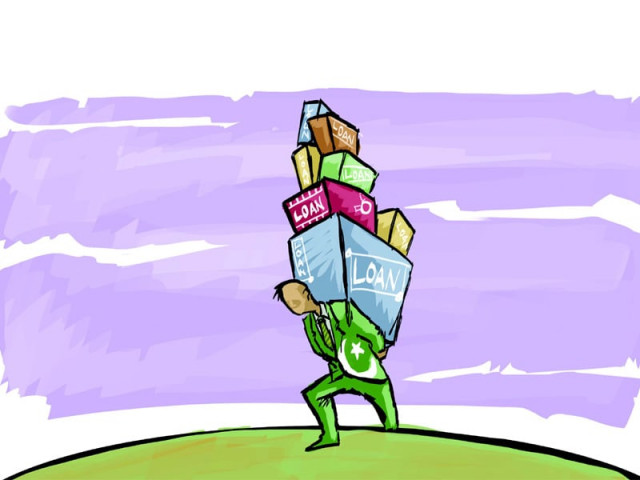Private sector lending to remain depressed: Analysts
Shrinking spreads unlikely to spur credit off-take to private sector.

Foundation Securities analyst Syed Asad Ahmed said his brokerage does not expect private-sector credit to grow at least in the short run. ILLUSTRATION: JAMAL KHURSHID
Speaking to The Express Tribune, Foundation Securities analyst Syed Asad Ahmed said his brokerage does not expect private-sector credit to grow at least in the short run mainly due to two factors: low risk appetite of the banks and structural issues in the economy.
“Although the expected resolution of the circular debt problem is a positive development, we must not forget that it is only one part of the larger energy crisis that the country currently faces,” he said, referring to the recurring electricity shortfall, poor recovery of dues, line losses and theft as major issues within the energy sector.
The private sector’s credit off-take has been suppressed in fiscal 2013: it stood at a paltry Rs8.9 billion until June 14, compared to Rs200 billion in the same period during the preceding year.
As for the banks’ low risk appetite, Ahmed said their bad experience in the wake of the 2008 financial crisis, which bloated the size of their non-performing loans, has made them risk-averse. “Moreover, banks cannot revive private-sector lending on their own. The government has no direct influence in this regard either, and all it can do is improve law and order and deal with the energy crisis effectively,” he said.
While the overall banking sector spread for the month of May remained 6.3%, Foundation Securities believes the banks’ core margins will shrink further in the short term and reach a multi-year low. “In such a situation, banks should turn their focus on generating non-interest income, such as commission charges on workers’ remittances and foreign exchange dealings,” Ahmed said.
Non-interest income constitutes somewhere around 10-20% of banks’ total income on average. For example, United Bank’s non-interest – or non-fund – income as a percentage of its total income is 21%, according to the latest financial results. Similarly National Bank, MCB Bank and Habib Bank have non-fund incomes (as a percentage of their total incomes) of 20%, 13% and 10% respectively.
Banks can also book gains on the revaluation of surplus on securities like Pakistan Investment Bonds, Ahmed noted; referring to the valuation of banks’ equity account that is adjusted to a higher level after an upward appraisal of capital assets and a resultant increase in their carrying value.
As per the results of the first quarter of 2013, top-tier banks have a revaluation surplus of between 11% and 40% of earnings per share in calendar year 2012, which they can book to provide support to their bottom line, the Foundation Securities estimates.
“With decreasing spreads and a lack of private-sector credit off-take, the second half of 2013 is likely to be unattractive for the banking sector,” he said.
Published in The Express Tribune, July 4th, 2013.
Like Business on Facebook, follow @TribuneBiz on Twitter to stay informed and join in the conversation.



















COMMENTS
Comments are moderated and generally will be posted if they are on-topic and not abusive.
For more information, please see our Comments FAQ